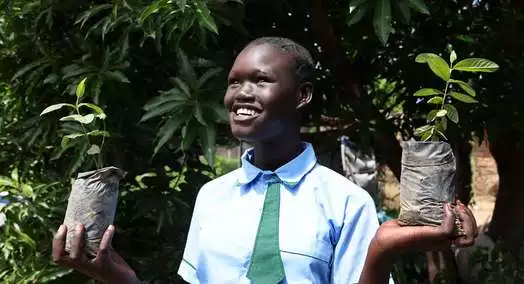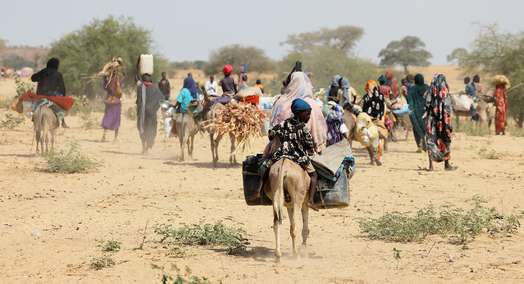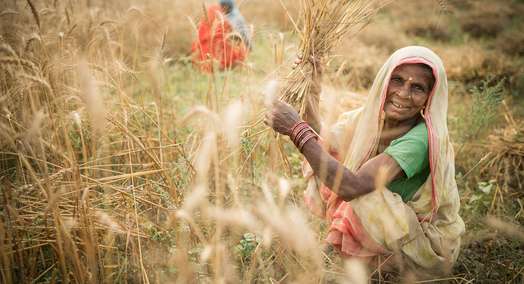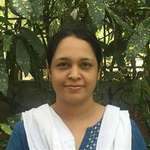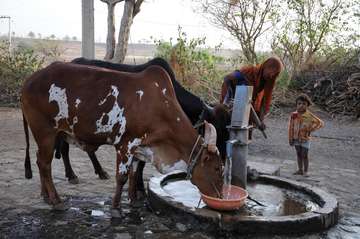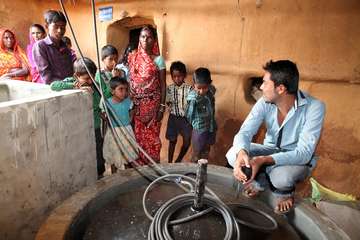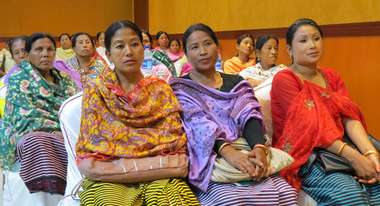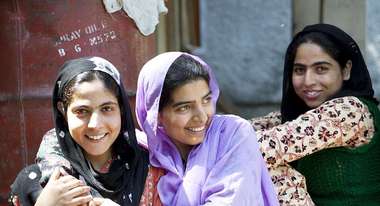India: Breaking the Silence
People’s fight against the drought in Bundelkhand.

Scorching sun, cruel heat and hardly any sight of water. All one could see was large swathes of dry lands and hungry, helpless and worried faces. At the advent of summer 2016 (March), India's central region of Bundelkhand, with a population of over 18 million people, battled one of the worst droughts in its recent history, that was aggravated due to poor monsoons in the last two years.
"It was a drought caused due to three successive dry monsoons and yet the authorities didn't recognise it as an emergency in time."- Sanjay Singh, an activist and Secretary of Parmarth Samaj Sevi Sansthan, one of Welthungerhilfe's partner organisations in Bundelkhand, which has been at the forefront of supporting vulnerable and marginalised population in the region.
This Photo Essay captures the successful drive by Welthungerhilfe, its partners and affiliated civil society organisations to raise Indoa's collective conscience on the Bundelkhand drought situation and to generate public pressure on the government to tackle the situation and make a difference. The collective voice of the affected people was carried to the authorities through a strong campaign and fierce media engagement, helping garner the much-needed attention and support. The photographs were taken in Bundelkhand between March and July 2016 by Welthungerhilfe's staff and partners
Cracked soil, evaporating water
Empty and hollow water had dried up in most of the area's wells, rivers, tube wells and ponds. Crops were destroyed completely. Life for an ordinary citizen in rural areas had practically come to a standstill. Desperation and hopelessness were evident everywhere.
Long walks for water
Amid extreme shortage of drinking water, women had to walk for at least 3-4 kms to fetch water for their families. "Villagers didn't have food or water to feed cattle. Nor did they have money to buy fodder from outside. Almost 5000 animals died in the district of Tikamgarh alone," says Sanjay Singh.
The situation began to become critical with each passing day. Unable to bear the famine, at least 1.8 million people migrated out of Bundelkhand to Delhi alone in the last year, sale of train tickets from the region suggested.
In many villages, people left their old parents behind as they couldn't afford to take them along.
While the villagers in Tikamgarh, Chattarpur and Sheopur were racing against time, the local government didn't recognise the emergency immediately. Grass root level activists criticised the local authorities for being too slow to respond to this crisis. "Despite our efforts to explain the situation to the authorities, they were practically in denial," as Singh of Parmarth puts it.
To break the silence the team decided to take up the cudgels to bring public attention to the urgency of the water crisis. Both activists toured drought hit districts tirelessly across the country, drawing extensive public attention
Going all out to media
Sensitizing journalists became the key strategy and the media became the fastest weapon to share information on the situation and to make people realize the magnitude of the crisis. A fierce media campaign ensured the drought and the distress in the region got so much coverage that the authorities could not ignore it any longer. Through articles in local newspapers, English dailies and international media, as well as blogs on websites and soundbites to media organisations by Welthungerhilfe and its partners, the crisis began to gain widespread attention and support.
Regular press conferences further helped to keep the reporters informed on the conditions in Bundelkhand and helped to convey it to the world.
Posting, Sharing and Tweeting helped to connect fastly
Considering the fact that government ministers and officials are increasingly using social media these days, Welthungerhilfe and its partners began to harness it as well. Popular social media platforms such as Facebook and Twitter proved to be the most effective way to share updates on the drought. Partners used it aggressively, so did Welthungerhilfe.
Marches and gatherings were held by partners and activists in drought-hit areas all over the country. People's Water Alliance or Jal Jan Jodo Abhiyan, which was formed in 2013 by activists and experts to raise awareness on water issues, conducted several meetings at various places in Bundelkhand, informing people about drought mitigation through revival of water bodies in the villages. The alliance led by water conservationist Rajendra Singh urged authorities to enact laws for restoration and conservation of water bodies and to ensure water security for all.
Making voices heard
On 5th May, 2016, thousands of farmers from across India led by the water alliance Jal Jan Jodo Abhiyan and Ekta Parishad, gathered in New Delhi to take part in "Jal Satyagra" - a non-violent demonstration, seeking government attention to drought, Water Security Act and community management of water resources.
Around the same time, more than 150 academics and activists wrote to Prime Minister Narendra Modi, urging him and his government to take appropriate relief measures immediately. Active campaign on the street and through media and the massive roar emerging out of it had an immediate impact. Prime Minister Modi, in his famous radio programme "Mann Ki Baat"" spoke about the drought and urged the country to conserve "every drop" of water during the monsoons.
While the media campaign was underway, we approached various donors (EU, GIZ and private sector) to support the relief work on the ground. Field assessments shared with them prompted some of them to come on board. Funds were generated that catered to the immediate needs of the affected people and helped the region stand back on its feet. Through the support of EU and Welthungerhilfe's own fund, began the mission to save thousands of lives. The first step was to provide safe and clean drinking water to the hardest hit villages.
Where tanker couldn't be arranged, water was distributed through low-cost innovative carts. Community kitchens were set up to provide at least two meals a day. Food packets were distributed. Fodder and drinking water for animals were arranged too. In some villages, fodder and drinking water tubs were put at common community areas for the animals. At some places, depots for fodder were created, where the dry hay could be bought at highly subsidised rates.
Meanwhile MGSA and Parmarth continued to massively use regional media to highlight the plight of the affected people and the relief work that was underway. Hardly any day had passed where the story of ongoing relief work didn't appear in the regional dailies.
Reviving water resources
At around the same time, a high level mission from BMZ and GIZ delegation visited the project area. Realizing the region needed longer term support and that food and nutrition security cannot be achieved without water, the GIZ gave a green light to a water harvesting project as a pilot in four villages.
During the intervention defunct handpumps and wells were revived through injection well method, paving the way for a long term ground water recharge.
Community members were encouraged to engage in repairing and reviving water resources. Over 400 people took part in digging and desilting structures such as ponds, wells, dams and rivers. In return for their work, they received food grains at the rate of 15 kg/day per family, a figure agreed upon by the villagers themselves. This initiative garnered widespread attention too.
The monsoon brings cheer
Today, hard work has paid off. 67 water bodies have been revived in the region directly through project intervention. As soon as the monsoon hit the area, the water bodies began to fill up, bringing immeasurable joy and relief to the families. The water can be used for drinking as well as irrigation purposes.
Welthungerhilfe's partners also constantly engaged with authorities, informing them about the need to rejuvenate rivers and revive traditional water bodies such as ponds. Thanks to their advocacy, the government of the state of Uttar Pradesh undertook the revival of nearly 140 water resources, before the start of rainy season. The results speak for themselves.

